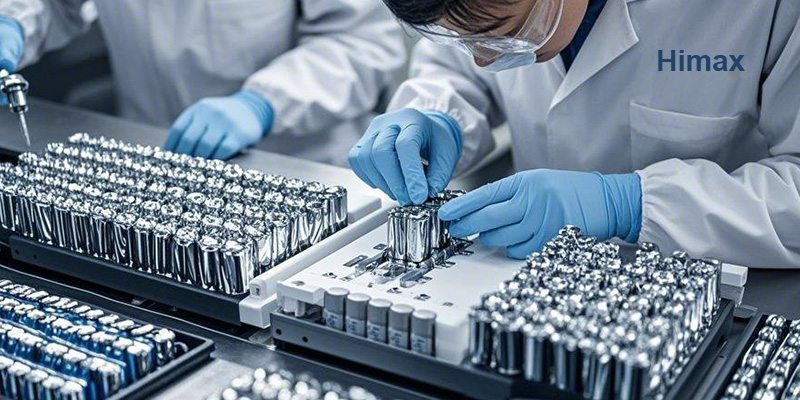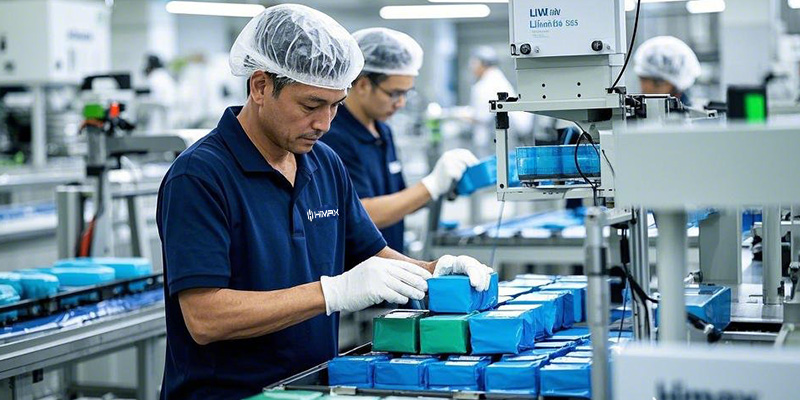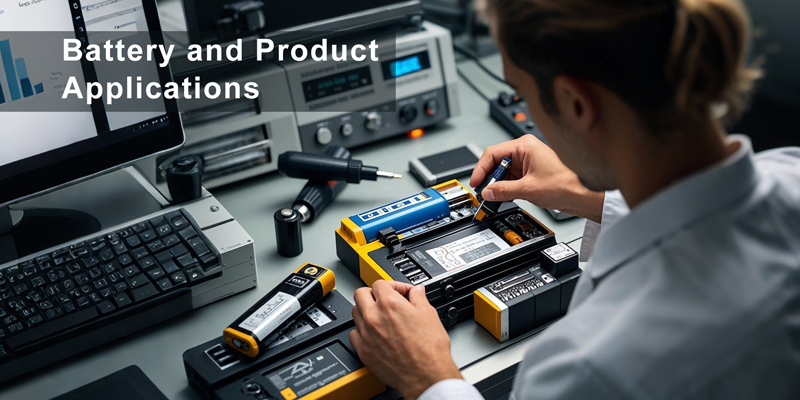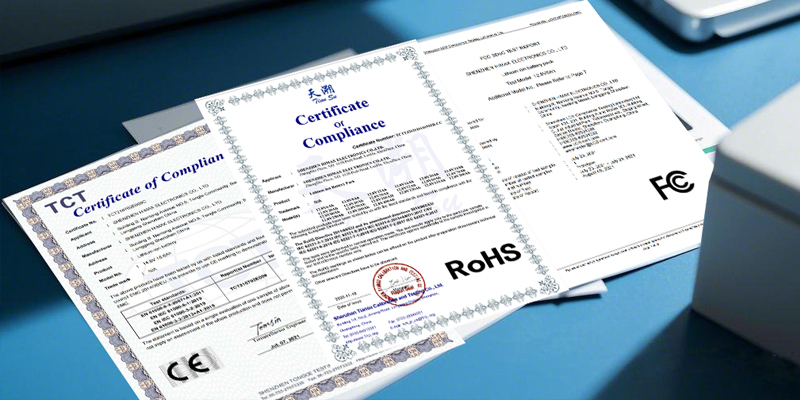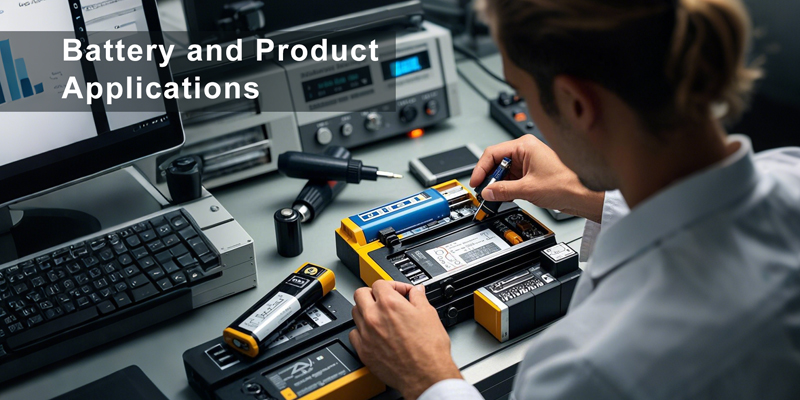
Understanding the Basics of Lithium-Ion Battery Configurations
To grasp how custom battery configurations can enhance product performance, it’s essential to understand the basics of lithium-ion battery configurations (lithium-ion battery configuration). In battery terminology, “s” stands for series, which increases voltage, while “p” stands for parallel, which boosts capacity. Here’s a quick breakdown of three common configurations:
-
1s1p: 1 cell in series, 1 cell in parallel. This setup uses a single cell, offering low voltage and capacity, making it ideal for low-power, low-capacity devices like Bluetooth earbuds or small sensors.
-
2s2p: 2 cells in series, 2 cells in parallel. This configuration doubles both voltage and capacity, making it suitable for devices needing moderate to high voltage and capacity, such as portable speakers or power tools.
-
3s1p: 3 cells in series, 1 cell in parallel. This setup triples the voltage while keeping capacity unchanged, perfect for high-voltage, low-capacity applications like drones or laser rangefinders.
Each configuration directly impacts the battery pack’s voltage (V), capacity (mAh), and power output (W). For instance, adding more cells in series increases voltage, boosting power delivery, while adding more in parallel increases capacity, extending runtime. Understanding these fundamentals is the first step to optimizing your product’s performance.
How Different Battery Configurations Affect Product Performance
The configuration of a lithium-ion battery has a direct impact on several key performance metrics. Let’s break it down into runtime, power output, device size and weight, and charging speed (1s1p vs 2s2p battery performance):
-
Runtime: Parallel connections (p) increase capacity, thereby extending runtime. For example, a 2s2p configuration doubles the capacity compared to 1s1p, meaning your device can run twice as long under the same power load. This is crucial for devices requiring extended use, like wireless security cameras.
-
Power Output: Series connections (s) increase voltage, enhancing power output. For instance, a 3s1p configuration delivers three times the voltage of a 1s1p setup, making it ideal for high-power devices like high-speed power tools or drones.
-
Device Size and Weight: Battery configuration also affects the size and weight of your product. A 1s1p configuration, with the fewest cells, is the smallest and lightest, making it perfect for portable devices like smartwatches. In contrast, 2s2p or 3s1p configurations, with more cells, increase size and weight, better suited for larger devices.
-
Charging Speed: Different configurations influence charging time as well. Parallel connections that increase capacity (e.g., 2s2p) may extend charging time, while series connections that increase voltage (e.g., 3s1p) may require higher charging power, affecting charger design.
To make these differences clearer, here’s a comparison table summarizing how 1s1p, 2s2p, and 3s1p perform across key metrics:
| Configuration | Runtime | Power Output | Size & Weight | Charging Speed |
| 1s1p | Shorter | Lower | Smallest | Faster |
| 2s2p | Longer | Moderate | Medium | Slower |
| 3s1p | Shorter | Higher | Medium | Moderate |
By carefully selecting the right configuration, you can optimize your product’s performance based on its specific needs.

Real-World Applications of Custom Battery Configurations Across Industries
Custom lithium-ion battery(custom battery solutions for electronics) configurations deliver unique value across various industries. Here are three industry-specific examples showcasing how tailored configurations meet diverse needs:
-
Consumer Electronics: In the smartwatch industry, ultra-slim design is a key competitive advantage. With limited space for batteries, a 1s1p configuration is often the ideal choice. HIMAX Electronics has provided 1s1p battery solutions for a U.S.-based smartwatch manufacturer, ensuring sufficient runtime while maintaining a sleek, compact design.
-
Medical Devices: Portable ECG monitors require a balance between runtime and size. A 2s2p configuration, which boosts capacity while keeping size manageable, is perfect for such devices. HIMAX Electronics designed a 2s2p battery pack for a medical device company, enabling their product to run continuously for over 12 hours on a single charge.
-
Industrial Equipment: Drones need high power output within strict weight limits, making a 3s1p configuration ideal due to its high voltage. HIMAX Electronics developed a 3s1p battery solution for a drone manufacturer, allowing their product to achieve higher flight speeds and payload capacities without compromising on weight.
These examples demonstrate how HIMAX Electronics delivers tailored battery solutions to meet specific client needs, helping products stand out in competitive markets.
The Advantages of Custom Lithium-Ion Battery Configurations
Opting for a custom lithium-ion battery(custom lithium-ion battery) configuration offers several distinct advantages over standard off-the-shelf solutions:
-
Performance Optimization: By precisely matching your product’s voltage, capacity, and power requirements, custom batteries significantly enhance device performance. For example, selecting a 3s1p configuration for a high-power device boosts output without adding unnecessary bulk.
-
Cost Control: Customization prevents over-engineering, saving costs. For instance, if your device only needs low voltage, choosing a 1s1p configuration instead of a 3s1p reduces the number of cells and overall expenses while meeting performance goals.
-
Market Competitiveness: Custom batteries give your product a performance, size, or runtime edge, helping it stand out in crowded markets. A slim smartwatch with a unique battery design, for example, is more likely to catch consumers’ attention.
-
Safety Assurance: Custom configurations can incorporate optimized designs and protection circuits to ensure safety. By carefully balancing series and parallel setups, risks like overcharging or over-discharging are minimized, extending battery lifespan.
With years of industry expertise, HIMAX Electronics provides end-to-end custom battery services—from needs analysis to product delivery—ensuring each solution delivers optimal results.
How to Choose the Right Battery Configuration for Your Product
Selecting the right lithium-ion battery configuration (how to choose lithium-ion battery configuration) for your product requires a comprehensive evaluation of several factors. Here are the key steps to guide your decision:
-
Needs Assessment: Start by defining your product’s core requirements, including voltage (V), capacity (mAh), power (W), and size constraints. For example, if your device needs high voltage but not much capacity, a 3s1p configuration might be best. If runtime is critical, a 2s2p setup could be more suitable.
-
Environmental Factors: Consider the operating environment. In high-temperature conditions, heat dissipation and safety become critical, potentially requiring fewer parallel cells to reduce heat buildup. In low-temperature settings, a higher-capacity configuration might be needed to offset performance drops.
-
Budget and Supply Chain: Strike a balance between performance and cost. A 1s1p configuration is the most cost-effective but may not meet the needs of complex devices, while 2s2p or 3s1p setups offer better performance at a higher cost. Work with your supplier to ensure a stable supply chain and optimize procurement costs.
-
Partnering with a Supplier: Collaborating with a professional battery supplier is key to success. HIMAX Electronics not only offers technical consultation but also designs and tests custom battery solutions tailored to your needs, ensuring the best balance of performance, safety, and cost.
By following these steps, you can select the battery configuration that best enhances your product’s performance and market competitiveness.
Custom 5V 2200MAh 18650 Lithium lon Battery Pack
By strategically selecting and customizing lithium-ion battery configurations like 1s1p, 2s2p, and 3s1p, you can significantly boost product performance, optimize size and runtime, and control costs effectively. Whether in consumer electronics, medical devices, or industrial applications, custom lithium-ion battery(custom lithium-ion battery) solutions offer a unique competitive advantage. HIMAX Electronics is committed to providing expert custom battery solutions, helping your products shine in the marketplace. Contact HIMAX Electronics today to explore the perfect custom battery solution for your product and start your performance upgrade journey!




